KILL BILL Explained. Dazzlingly Beautiful Structure
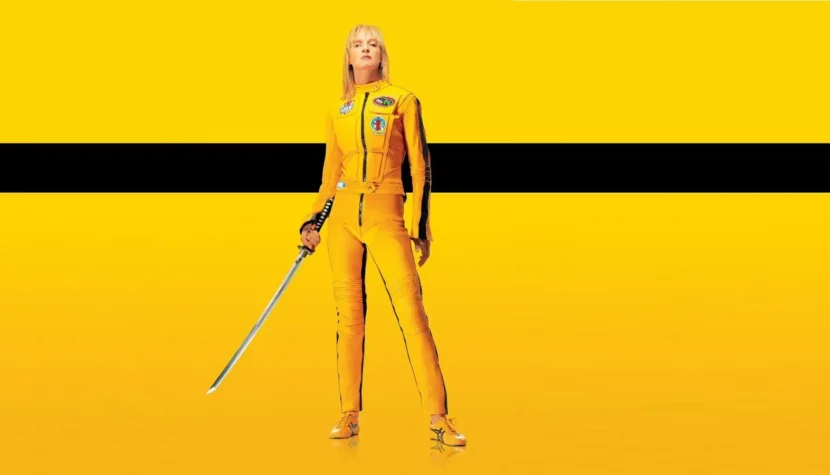
Start by reading KILL BILL Decoded: From Pastiche to Incoherent Postmodernism.
For this reason, I have never engaged in debates, for example, with the authors of reviews I disagreed with or with the authors of various analyses whose content I found disagreeable. I consider polemics an assault on freedom of expression. For how else can one describe a discourse conducted in a spirit of combative disagreement? Kill Bill

Everyone has the right to a different opinion, expressed in speech, writing, or any other form of communication. By arguing with an author, regardless of how their statement is formulated, we take away their right to maintain that difference. Someone might ask: how can you take away someone’s right to an already formulated statement? It’s possible: by negating it. In polemics, we gradually prove to the author that they are wrong, forgetting that the author doesn’t necessarily have to be right (though they might be), but indeed has the right not to be right.
So why bother proving them wrong, especially since they might be wrong, or they might not be, which, in relation to subjective truths, is a question practically impossible to resolve? Instead, one can simply (using the same right to freedom of expression) write their own review or analysis and, through it, express what is in their heart and soul…
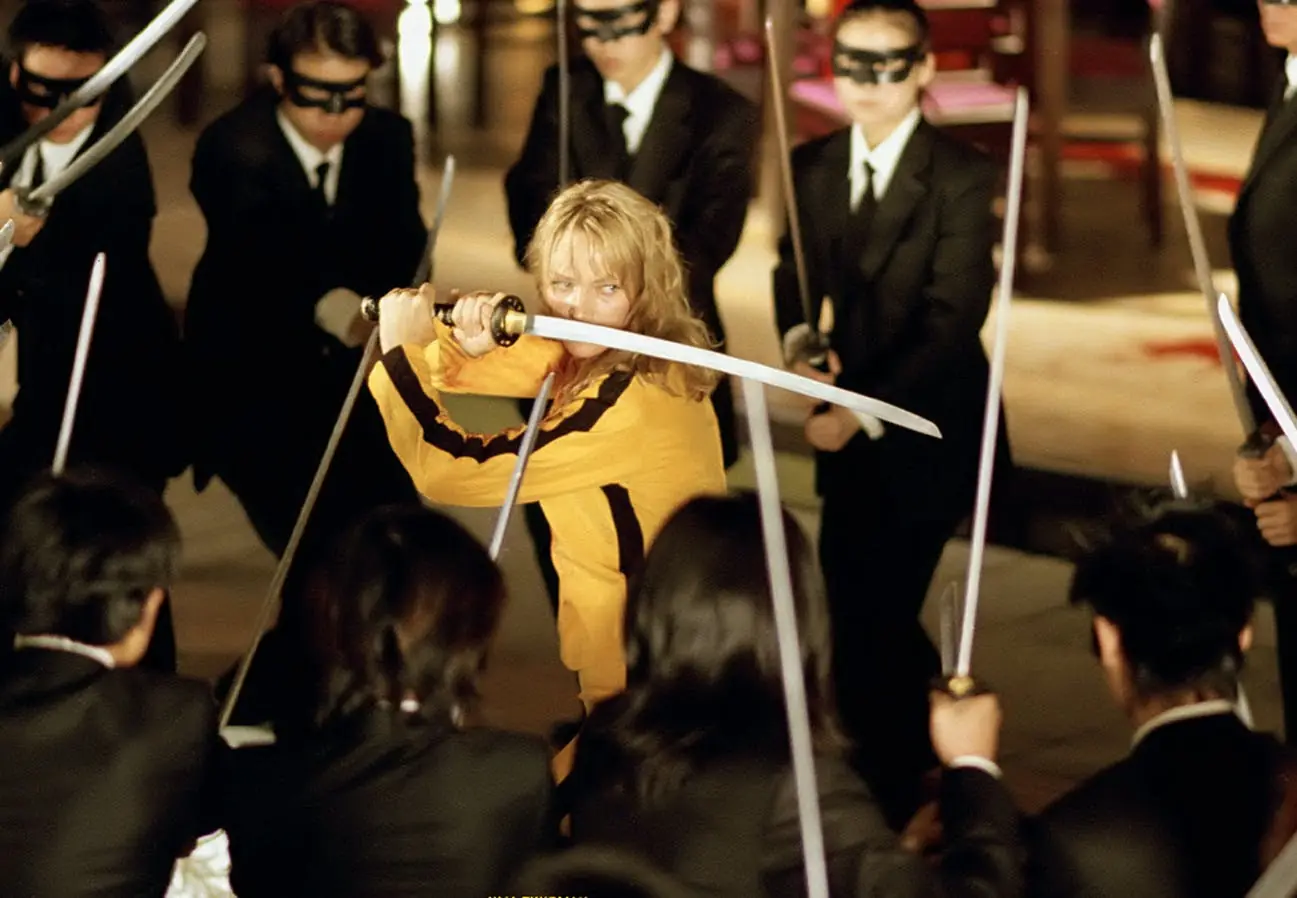
I have decided to write… a counter-analysis. But isn’t this the same thing? Isn’t a counter-analysis essentially a veiled polemic, especially if it refers to someone else’s specific statement, in this case, the recently published and respectable opinion of my esteemed colleague Bartosz Rudnicki (KILL BILL Decoded: From Pastiche to Incoherent Postmodernism)? Well, maybe it is, or maybe it isn’t. The value of any argument lies in its content, and the label attached to it and the resulting definition are of secondary importance, even though they provide information to the reader, influencing their attitude towards the mentioned content before even engaging with it.
The same applies to attaching a particular label to a film. So-called categorization (by genre) creates certain expectations in the viewer before the screening, leading them to anticipate something that should happen (e.g., in an emotional aspect), but which may not necessarily occur. Therefore, labels are harmless but harmful. Yes, they (seemingly) make classification easier, but they hinder the evaluation of, for example, an artistic work. When looking at a broad statement through the prism of an attached label, it’s easy to draw not only hasty but also erroneous conclusions. So, is this text a counter-analysis or a polemic? I claim that it is a counter-analysis, which is my analysis, a manifestation of my own opinion, merely opposing the opinion expressed by someone else, who may be right, or may not be, yet has the full right to have or not have that opinion – which I do not intend to judge.

Continuing this line of reasoning: Is Quentin Tarantino’s work Kill Bill a pastiche? Or maybe a parody? Or perhaps a moving multi-genre caricature, born in the mind of a skilled plagiarist? Or simply a collage of sounds and images bursting with creative passion, unjustly labeled this or that way, only to be judged according to that label, often even criticized – perhaps rightly, perhaps wrongly? Is Kill Bill also the first step on a slippery slope where Quentin Tarantino began to slide down, perhaps now balancing near the very bottom of his creative abilities? My humble opinion on this matter will be outlined below…
Quentin Tarantino is one of my favorite creators, the author or co-author of at least a few excellent screenplays, not directed by himself (True Romance, Natural Born Killers), and successfully directed by him (Reservoir Dogs, Pulp Fiction, Jackie Brown, etc.). He is also, of course, the main author of the controversial, in many respects, work with the short and concise title Kill Bill. I won’t summarize the entire plot because there’s essentially nothing to summarize. Kill Bill is primarily a play with form, and the film’s storyline is merely a pretext for the sheer stylistic madness that explodes on the screen. The entire content of the film can be summed up in one word: revenge. This one word is the beginning, middle, and end of everything we experience while interacting with Quentin Tarantino’s film. This one word is the driving force behind the action, which is relatively lively in the first part of the story and lazily unfolds before our eyes in the second part.
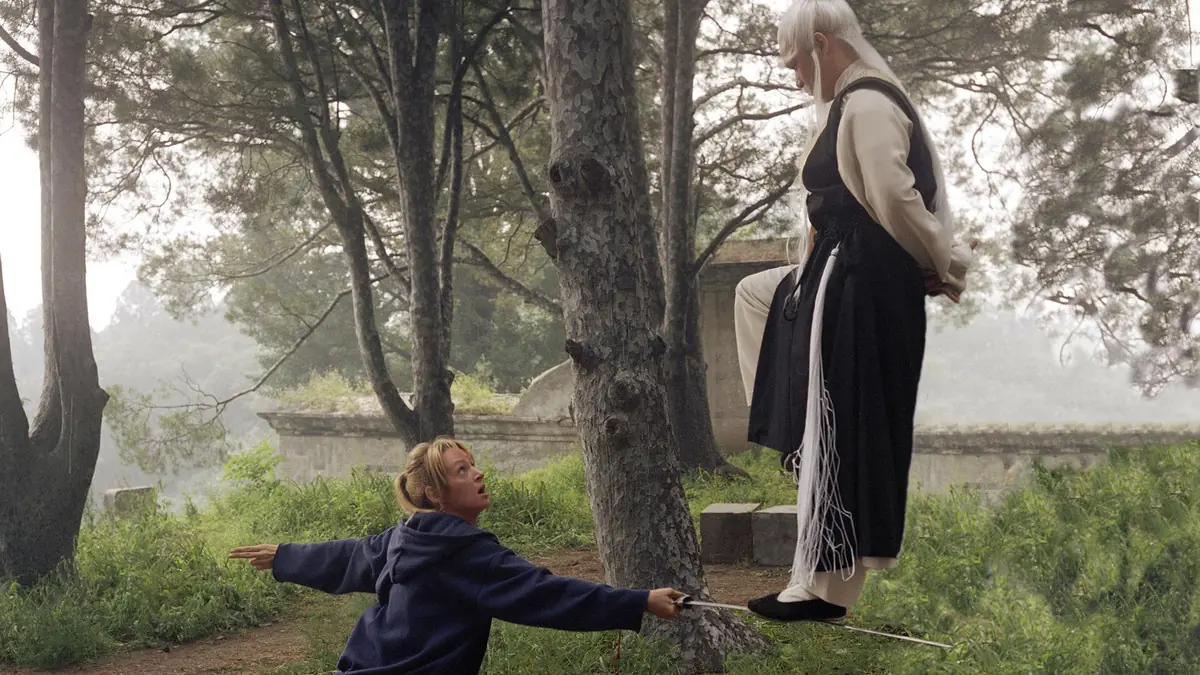
Let’s focus, however, not on the whole, but on the details, savor the individual scenes and sequences, and marvel at their undeniable mastery. First, the black-and-white opening scene: in the frame, the face of the Bride, aka Black Mamba, bloodied; the Bride aka Black Mamba breathes rapidly like a frightened animal caught in the trap of a ruthless poacher. After a moment, we hear footsteps, the slow, steady clatter of boots on a wooden floor. It’s Bill. We don’t see his face (in the first part of the film, we won’t see it at all), but we hear his voice: soft, low, almost soothing. Bill’s hand slides into the frame.
Bill wipes the blood from the face of the dying Bride (aka Black Mamba) with a handkerchief (with his name embroidered on it). The sequence ends with a shot to the main character’s head. Blackness. Before our hearts, stirred by the gunshot, stop fluttering in our chests, our ears are soothed by the first notes of Bang, Bang by Nancy Sinatra, which lull us into the dreamy mood of the next beautifully photographed frame: The Bride aka Black Mamba lies in a coma in the half-light of a hospital room; part of the background is illuminated by the rays of sunlight streaming through the shaded window…

Another sequence: the aftermath of the massacre at the wedding chapel in El Paso. Sheriff Earl McGraw arrives, where Son Number One awaits him. Sheriff Earl McGraw and Son Number One enter the slaughterhouse, engaging in a rather peculiar dialogue, in its own way amusing. It’s here that the Bride aka Black Mamba rises from the dead for the first time… FADE OUT. Back to the hospital and the comatose main character, beautifully framed. And on the horizon appears Elle Driver aka Mountain Snake, walking down the corridor with Twisted Nerve on her lips…
Let’s move on: here’s a sequence realized in anime style, depicting the massacre of O-REN ISHII’s parents aka Far Eastern Viper. It’s a gem in itself! Yes, we owe its execution not to Quentin, but to the Japanese studio Production I.G. (where Ghost in the Shell was created), which doesn’t negate the fact that the idea of including this sequence in the film undoubtedly originated in Quentin’s twisted mind – for which we should praise him endlessly…

To lighten the mood and improve humor, there’s the sequence in the Hattori Hanzo (Sonny Chiba) establishment – very amusing up to a point. The real highlight is the Great Massacre at the House of Blue Leaves, preceded by a first-rate scene of Boss Tanaka’s outburst of anger and his being put in place by the leader of the Crazy 88, O-REN ISHII – in a decisive and final manner. Then comes the very pleasant speech by O-REN ISHII to the distinguished audience, with the participation of an interpreter, on the subject of her Chinese-American roots. Wonderful!
But let’s pause for a moment at the massacre itself in the Japanese nightclub, where it’s first colorful, then black and white, and then colorful again, but very, very bloody. Limbs flying here and there, spilled intestines, horribly mutilated bodies, bathed in fountains of red, then black, then red blood again – that’s what Quentin serves us with finesse in this perversely delicious sequence. And he does it with absolutely no sloppiness! The Bride aka Black Mamba vs Crazy 88 battle is an absolute masterpiece in every possible film discipline. From the acting (Uma Thurman is just great in this film!) through the cinematography (by Robert Richardson), editing (by Sally Menke), music, fight choreography (for which Yuen Wo-Ping, co-creator of the success of The Matrix and Crouching Tiger, Hidden Dragon, is responsible), to the direction – everything is in perfect order. It’s clear that Quentin firmly controls everything and everyone, and masterfully manages it all.
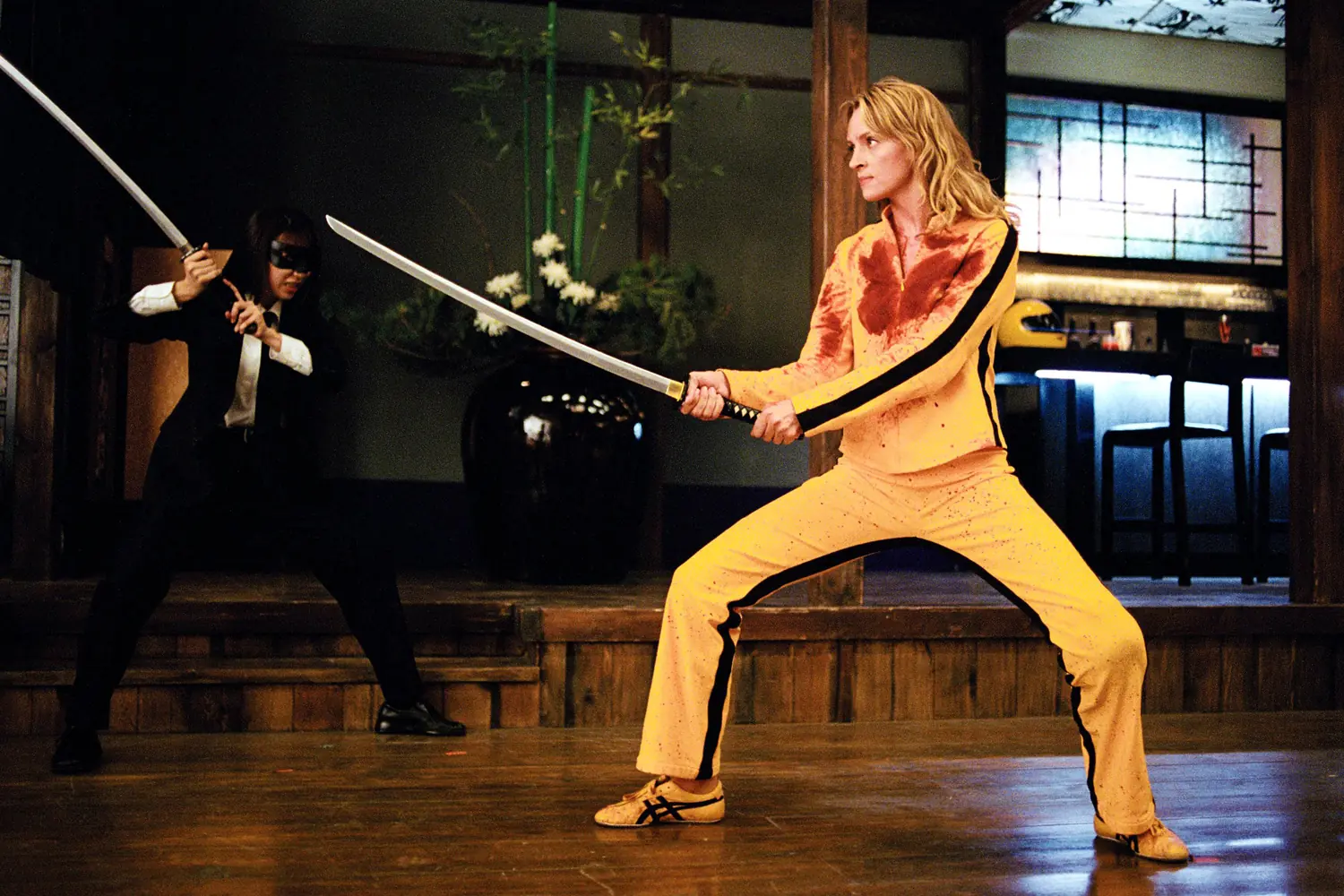
In this madness, there’s no chaos or hysteria, but iron discipline, order, and structure, allowing the viewer not to get lost in the multitude of stimuli attacking them from the screen at the speed of a machine gun burst. The fights themselves look very realistic, even though their believability is highly conventional. Fortunately, this conventionality only applies to our reality, the one we see outside the window, the one we encounter every day and leave behind after crossing the threshold of the cinema (or metaphorically, after crossing the threshold into the world first created by someone and then enclosed in the finished form of a film work).
Cinema is magic – we should always remember that. It makes it easier for us to believe what we see on the screen, allowing us to swallow all the improbabilities unfolding before our eyes. Every creator knows this. Quentin knows this. Thank God we all know this, or at least we should. Such knowledge is not just useful but essential for properly understanding a work of film that is conventionally credible. The characters in the film are flying? So what!? Blood spurts from a severed limb like a geyser of hot water? So what!? This is a FILM, where anything is possible! Quentin uses hyperbole? Of course. Quentin juggles quotes and borrowings (on many levels, including personal ones)? Of course. So, did Quentin create a pastiche? My answer: maybe yes, maybe no! Quentin simply made a FILM, and I firmly stand by that statement, which is also my clear response to the earlier questions (“Is Quentin Tarantino’s work, ‘Kill Bill,’ a pastiche?” etc.).
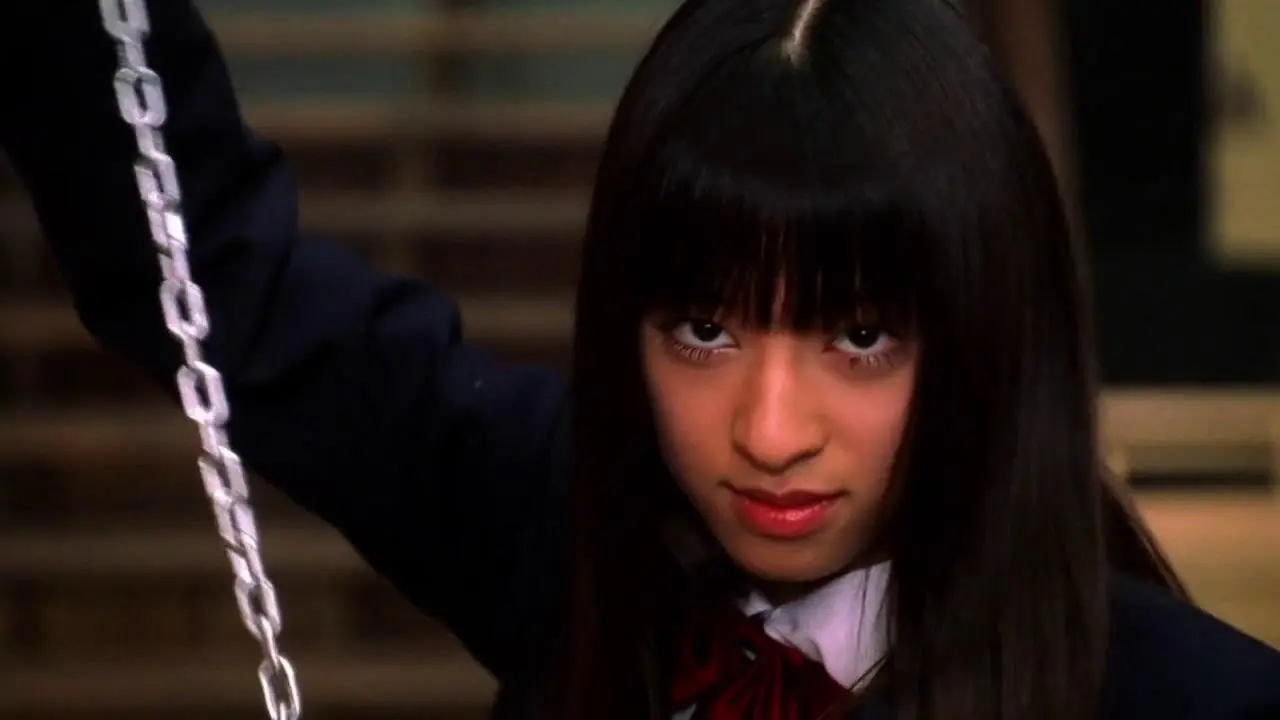
The climax of the House of Blue Leaves massacre (and simultaneously the pearl of the first part of Kill Bill) is the outdoor duel scene between The Bride, aka Black Mamba, and O-Ren Ishii, aka the Cottonmouth – beautifully filmed. I love revisiting that scene, I won’t deny it. The choreography, the music (a revamped version of Joe Cocker’s Don’t Let Me Be Misunderstood, nicely integrated), the cinematography; snowflakes lazily falling on the white snow under the feet of the fiercely battling adversaries – well, it’s just pure poetry.
In the second part of the film, you can also find a few gems: the scene of being buried alive (by Budd and his companion) of The Bride, aka Black Mamba, followed by the claustrophobic visit to the coffin of the buried-alive heroine, likely a few feet (not necessarily six) underground… Then, the third resurrection of the main character (the second occurred in the hospital after a mosquito bite), followed by a fight to the death in Budd’s miserable abode, where The Bride, aka Black Mamba, faces off against Elle Driver, aka California Mountain Snake. The chapter The Cruel Tutelage of Pai Mei (with Chia Hui Liu as the master), a tasty morsel for fans of martial arts films once made by the Shaw Brothers studio (by the way: the original Shaw Scope intro plays at the beginning of the film, from the Shaw Brothers studio). And for dessert, the magnificent finale: the lioness returns to her cub, finally letting her emotions flood out as she sobs on the bathroom floor… After all, love is always the most important thing, especially parental, unconditional love; the kind of love that makes us ready to kill if necessary.

Now the question (questions): does everything I’ve written above, do all those wonderful scenes and sequences I’ve recalled, prove that Quentin Tarantino has hit rock bottom with this particular film (here I refer to Bartosz Rudnicki’s statement)? Do all these wonderful scenes and sequences prove that Quentin Tarantino suffered from creative stagnation during the making of Kill Bill? And one more question: does the fact that the film is NOT (or IS) a pastiche/parody/whatever else in any way diminish the value of this film?
Earlier I asked the question: Is Kill Bill also the first point on a downward slope, down which Quentin Tarantino has started to slide, perhaps now balancing somewhere near the bottom of his creative potential? My answer is: no, Kill Bill is not the first point on a downward slope down which Quentin Tarantino has started to slide, perhaps now balancing somewhere near the bottom of his creative potential. And the fact that Kill Bill is a thoroughly kitschy and shallow work doesn’t change my mind. So what. Because Kill Bill is above all great emotions and the joy of creation radiating from every frame, which inevitably transfers to us, the viewers. Quentin loves cinema, which is simply evident and audible.
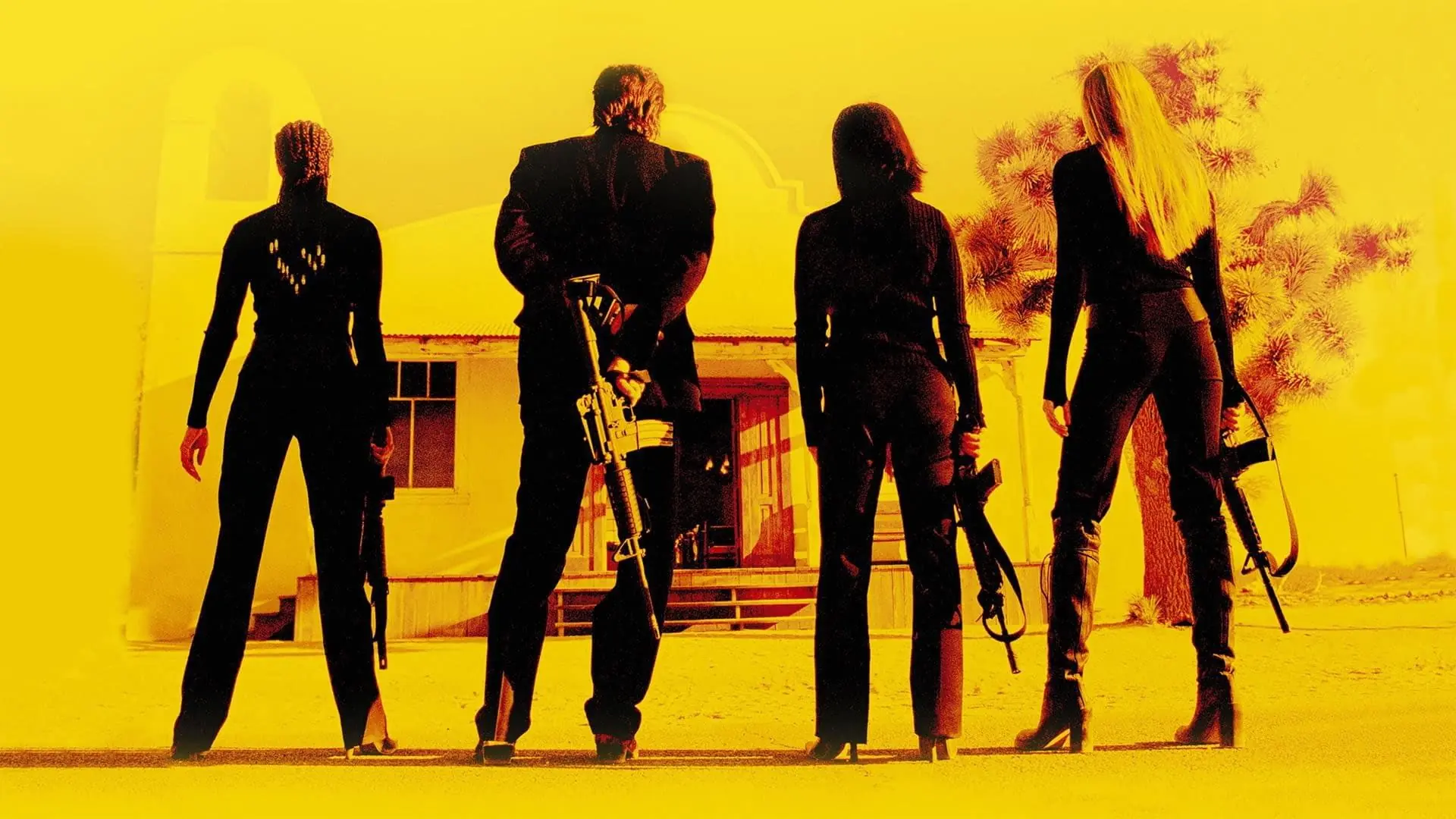
Of course, we don’t have to love Quentin or what Quentin does (even if we love cinema). If we love children, we don’t have to love all the children in the world, just like we don’t have to love a specific child, for example, a neighbor’s child. However, we can always muster a little understanding – not only towards the children we love. If the neighbor’s child builds a dazzlingly beautiful structure out of blocks and proudly presents it to us, claiming it’s a house, even though it doesn’t resemble a house, palace, or any other ordinary, clearly defined building – let’s not criticize it. Let’s not tell the child that their creation is bad because it’s not a house. Instead, let’s tell them that their creation is wonderful and innovative, and the fact that it was made from ordinary and old blocks only adds to its value in our eyes, filled with admiration for the child’s creativity.
Kill Bill is just such a dazzlingly beautiful structure, which may not necessarily be a house, a palace, or any other ordinary and clearly defined building. Therefore, I appeal: let’s give Quentin a little understanding!
Written by Boleslaw Dochunski-Duchonski

